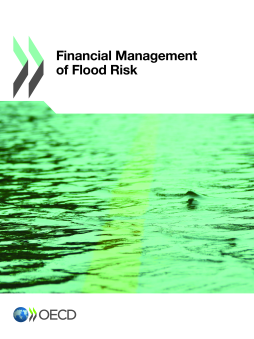
BOOK
Financial Management of Flood Risks
(2016)
Additional Information
Book Details
Abstract
Disasters present a broad range of human, social, financial, economic and environmental impacts, with potentially long-lasting, multi-generational effects. The financial management of these impacts is a key challenge for individuals and governments in developed and developing countries. G20 Finance Ministers and Central Bank Governors and APEC Finance Ministers have recognised the importance and priority of disaster risk management strategies and, in particular, disaster risk assessment and risk financing. The OECD has supported the development of strategies for the financial management of natural and man-made disaster risks, under the guidance of the OECD High-Level Advisory Board on Financial Management of Large-scale Catastrophes and the OECD Insurance and Private Pensions Committee. This work has included the elaboration of an OECD Recommendation on Good Practices for Mitigating and Financing Catastrophic Risks and a draft Recommendation on Disaster Risk Financing Strategies; The Financial Management of Flood Risk extends this work by applying the lessons from the OECD’s analysis of disaster risk financing practices and the development of its guidance to the specific case of floods.
Table of Contents
| Section Title | Page | Action | Price |
|---|---|---|---|
| Cover | Cover | ||
| Table of contents | 5 | ||
| Abbreviations and acronyms | 8 | ||
| Executive summary | 9 | ||
| Chapter 1: Introduction: The prevalence of flood risk | 11 | ||
| Notes | 15 | ||
| References | 15 | ||
| Chapter 2: Flood risk in a changing climate | 17 | ||
| 2.1 Trends in the occurrence and impact of flood events | 19 | ||
| 2.2 The economic impact of floods | 23 | ||
| 2.3 Potential impact of climate change on the intensity and frequency of flood events | 26 | ||
| 2.4 The potential role of insurance in reducing economic disruption | 30 | ||
| Notes | 33 | ||
| References | 34 | ||
| Chapter 3: Insuring flood risk | 39 | ||
| 3.1 Financial protection against flood risk across countries | 40 | ||
| Private insurance coverage for flood risk | 40 | ||
| Public insurance of flood risk | 44 | ||
| Microinsurance | 46 | ||
| Public compensation | 47 | ||
| 3.2 Underinsurance of flood risk | 48 | ||
| 3.3 Challenges to insuring flood risk | 51 | ||
| Factors affecting the price of flood insurance | 51 | ||
| Size of expected losses | 52 | ||
| Risk diversification | 52 | ||
| Uncertainty in quantification of potential exposures | 54 | ||
| Factors affecting the willingness-to-pay for flood insurance coverage | 56 | ||
| The flood insurance market failure | 58 | ||
| Notes | 58 | ||
| References | 59 | ||
| Chapter 4: Improving the insurability of flood risk | 63 | ||
| 4.1 Investments in risk reduction | 64 | ||
| Land-use planning | 66 | ||
| Structural flood mitigation | 70 | ||
| Household risk reduction | 75 | ||
| The benefits of a comprehensive approach to risk reduction | 78 | ||
| 4.2 Mapping and modelling of flood risk | 79 | ||
| 4.3 Addressing limited demand for flood insurance | 82 | ||
| Enhancing public awareness | 83 | ||
| Building understanding of risk levels | 83 | ||
| Improving understanding of financial protection | 85 | ||
| Premium Subsidies | 87 | ||
| Compulsion | 92 | ||
| Note | 96 | ||
| References | 96 | ||
| Chapter 5: Managing the fiscal cost of floods | 107 | ||
| 5.1 The fiscal costs of floods | 108 | ||
| 5.2 Minimising fiscal costs | 109 | ||
| Compensation and financial assistance schemes | 109 | ||
| Public insurance schemes | 112 | ||
| 5.3 Options for risk financing and transfer | 116 | ||
| 5.4 Costs and benefits of different approaches to fiscal management of flood risk | 120 | ||
| References | 121 | ||
| Chapter 6: Designing a disaster risk financing strategy for flood risk | 127 | ||
| 6.1 Estimating exposures and identifying financial vulnerabilities | 128 | ||
| 6.2 Supporting the effective financial management of flood risk | 129 | ||
| 6.3 Managing government exposures | 131 | ||
| Note | 133 | ||
| References | 133 |
